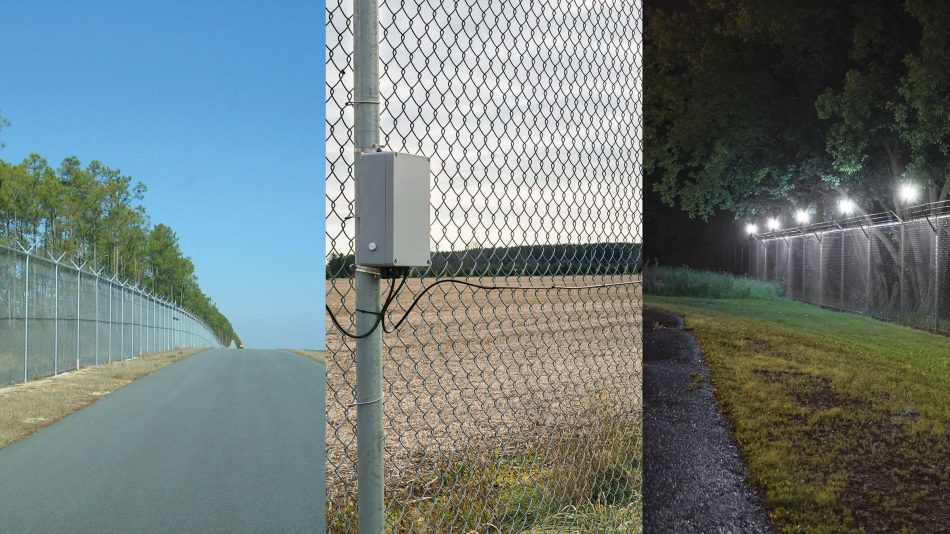The Importance of a Fiber Optic Security System in Safeguarding Critical Infrastructure and Facilities
The Importance of a Fiber Optic Security System in Safeguarding Critical Infrastructure and Facilities
Blog Article
Why Fiber Optic Safety Systems Are the Future of Defense
The transition to fiber optic safety and security systems marks a considerable advancement in the realm of security, driven by their outstanding data transmission capabilities and durability to external interferences. These systems not just help with faster and extra trustworthy communication however additionally provide a cost-efficient service with lowered maintenance needs. As the landscape of protection develops along with emerging innovations such as AI and IoT, the possibility for fiber optics to improve and redefine safety infrastructures ends up being significantly apparent. The effects of these advancements raise important inquiries about the future of safety and security procedures and their performance in an ever-changing environment.
Benefits of Fiber Optic Solutions
One of the primary advantages of fiber optic systems is their superior data transfer ability, which assists in the transmission of big volumes of data over cross countries without considerable loss. This particular is particularly advantageous for safety and security applications that require the continual monitoring and transfer of high-def video clip feeds, sensor information, and various other crucial details. Fiber optics can suit the growing demands of modern protection systems, ensuring that data continues to be undamaged and trusted.
Furthermore, fiber optic cable televisions are less at risk to electromagnetic interference, which can be a substantial problem in environments with different electronic gadgets. This resistance enhances the stability of the data being sent, thus minimizing the danger of data violations or system failings. Moreover, fiber optic systems are inherently a lot more secure than typical copper cable televisions, as taking advantage of a fiber optic line without discovery is exceedingly tough.
The longevity of fiber optic cable televisions additionally contributes to their charm. They are immune to environmental elements such as dampness and temperature changes, lowering upkeep costs and boosting system long life. Overall, these advantages setting fiber optic systems as a durable and efficient choice for contemporary protection infrastructures, making sure trusted and secure data transmission.
Improved Information Transmission Rate

The capability to transfer substantial quantities of data quickly helps with the smooth assimilation of high-def video clip feeds and progressed analytics. Security systems can now process and evaluate info in real-time, enhancing action times and situational recognition. In addition, fiber optic links sustain longer transmission ranges without destruction of signal top quality, making them ideal for expansive security networks.
The increased speed of fiber optic systems not only enhances the performance of security procedures yet additionally lowers latency. This is specifically vital in essential scenarios where prompt decision-making can stop safety violations or alleviate prospective risks. As organizations remain to focus on security and effectiveness, the demand for fast and dependable data transmission will certainly strengthen fiber optic systems as a keystone of modern-day safety facilities.
Resistance to Interference
Fiber optic safety and security systems continually demonstrate phenomenal resistance to electro-magnetic interference, a vital advantage in settings susceptible to electronic sound. Unlike conventional copper cable televisions, which can be adversely influenced by magnetic fields, radio regularity interference, and other types of electrical disruption, fiber optic cable televisions make use of light to transfer information. This intrinsic building makes sure that the signals stay clear and unchanged, regardless of surrounding digital activity.
Making use of glass or plastic fibers in fiber optic modern technology creates an obstacle versus disturbance, enabling reliable information transmission also in difficult circumstances such as industrial centers, city areas with high digital website traffic, or places near radio towers. This particular significantly minimizes the likelihood of signal deterioration or loss, making fiber optic systems specifically suitable for safety applications where honesty and accuracy of data are extremely important.
Furthermore, this resistance to interference boosts the total performance and dependability of protection systems, ensuring that surveillance and alert systems work effortlessly. In a globe where security is increasingly endangered by innovative modern technologies, the resilience of fiber optic systems stands apart as a critical function, enhancing their standing as an essential component of contemporary safety and security facilities.
Cost-Effectiveness Gradually
Substantial price financial savings can be attained with time with the execution of fiber optic protection systems. While the first financial investment might appear greater compared to conventional copper-based systems, the long-lasting monetary benefits become apparent through reduced functional and upkeep expenses (fiber security). Fiber optic cords are inherently much more resilient and less at risk to ecological variables, which converts to reduce replacement and repair expenses over their life-span
Furthermore, fiber optic systems call for less power to run, which even more lowers energy prices. Improved information transmission abilities permit less repeaters and amplifiers, reducing equipment financial investment and improving installment procedures. The scalability of these you could try this out systems likewise adds to cost-effectiveness, as organizations can broaden their protection infrastructure without incurring significant additional expenses.
One more element to consider is the boosted performance in monitoring and action capacities that fiber optics supply. Boosted real-time data transmission can cause quicker case response times, potentially mitigating losses and responsibilities related to safety and security violations. In amount, the long-term advantages of fiber optic safety and security systems not just warrant the first expense but also position them as an have a peek at this site economically sensible selection for companies looking for durable protection services.

Future Developments in Safety
Progressing technologies are readied to change security systems, integrating fabricated knowledge (AI) and artificial intelligence to boost hazard detection and reaction abilities. These advancements will certainly allow safety systems to assess vast amounts of data in real-time, recognizing patterns and abnormalities that show potential threats. This proactive method will allow quicker decision-making and a lot more reliable case feedbacks.
In addition, the incorporation of the Internet of Things (IoT) is leading the means for interconnected security tools, offering comprehensive security and surveillance. Smart sensing units can pass on details concerning ecological modifications, while automated informs can inform safety and security workers right away of questionable activities.
Furthermore, the evolution of biometric technologies will certainly further bolster protection devices. Face recognition, fingerprint scanning, and retina identification are coming to be more innovative, providing layers of authentication that are difficult to bypass.
Final Thought
To conclude, fiber optic protection systems stand for a significant advancement in security innovation, using unmatched data transmission rate, resistance to electro-magnetic interference, and look what i found long-term cost-effectiveness. As the need for advanced security remedies continues to expand, the combination of fiber optics with arising technologies such as AI, IoT, and biometrics will certainly further boost safety and security infrastructures (fiber security). The mix of these innovations will certainly ensure a much more secure and receptive environment, solidifying optical fiber as a cornerstone of future protection systems
Report this page